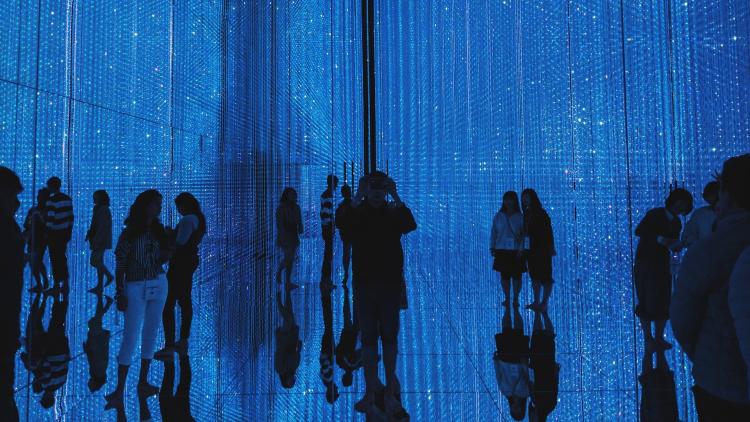Buddhist arts of South Asia, Southeast Asia and Tibet

Key information
- Start date
- End date
- Year of study
- Year 2, Year 3 or Year 4
- Duration
- Term 2
- Module code
- 158100022
- FHEQ Level
- 5
- Credits
- 15
- Department
- Department of History of Art and Archaeology & School of Arts
Module overview
From its emergence in north India in the mid first millennium BC, Buddhism subsequently spread to much of Asia over the following thousand years. This module examines key themes in the study of Buddhist art, visual and material culture in South Asia, Southeast Asia and/or Tibet and the Himalayas.
The module may primarily address a single region - South Asia, Tibet or mainland Southeast Asia - or may range more widely. Central issues addressed include: the figure of the ‘historical’ Buddha in theory and practice; relics, reliquaries and the stupa; iconography, aesthetics and Buddhist imagery; body, gender and Buddhist images; narratives in sculpture and painting; Esoteric Buddhism and the Tibetan pantheon; the mandala in art and ritual; the historiography of Buddhist art; consecration ritual and the 'lives' of Buddha images. Class teaching will be complemented by visits to museum collection.
Objectives and learning outcomes of the module
- Demonstrate broad knowledge of periods, styles and themes in the Buddhist art history of South Asia, Southeast Asia and/or Tibet and the Himalayas.
- Critically analyse and interpret the production and use of visual material - including sculpture, paintings and/or architecture - within its cultural, political, religious and economic contexts.
- Situate the production of knowledge of Buddhist art in a global historical context.
- Evaluate varied approaches and key issues in the study of the arts of Buddhism.
- Demonstrate a range of skills in visual and literary analysis, research and other study skills for successful academic and vocational pathways.
The learning outcomes for this course are in line with those of the History of Art & Archaeology programme as a whole with its emphasis on the analysis of visual and material culture from a range of themes and within an understanding of the social, political, religious and cultural contexts for the production and use of art.
Workload
- Lectures: 1 hour per week
- Seminars: 1 hour per week
- Independent study: 130 hours (over 10 weeks)
Scope and syllabus
Depending upon staff availability, the module may primarily address a single region - South Asia, Tibet or mainland Southeast Asia - or may range more widely across South Asia, Southeast Asia and/or Tibet and the Himalayas in two blocks of lecture-seminars. Core issues may include the following:
- The figure of the ‘historical’ Buddha in theory and practice
- Relics, reliquaries and the stupa
- Iconography, aesthetics and Buddhist imagery
- Body, gender and Buddhist images
- Narratives in sculpture and painting
- Esoteric Buddhism and the Tibetan pantheon
- The mandala in art and ritual
- The historiography of Buddhist art
- Consecration ritual and the 'lives' of Buddha images
Method of assessment
- 750-word critical object/literature analysis (worth 20% of marks)
- 1,500-1,700 word essay second years and 1,700-2000 word essay finalists (worth 40%)
- Exam: 2 hours (worth 40%)
Suggested reading
- Pia Brancaccio, and Kurt A. Behrendt. Gandhāran Buddhism: Archaeology, Art, Texts. Vancouver: UBC Press, 2006 .
- Brauen, Martin. 1997. The Mandala: Sacred Circle in Tibetan Buddhism. London: Serindia Publications.
- Crosby, Kate. Theravada Buddhism: Continuity, Diversity and Identity. London: Wiley Blackwell, 2014.
- DeCaroli, Robert Image Problems : The Origin and Development of the Buddha’s Image in Early South Asia (Seattle : University of Washington Press, 2015).
- Dehejia, Vidya. Discourse in Early Buddhist Art: Visual Narratives of India (New Delhi: Munshiram Manoharlal Publishers, 1997).
- Heller, Amy. 1999. Tibetan Art. Tracing the development of spiritual ideals and art in Tibet 600–2000 A.D. Milano: Jaca Book.
- Huntington, Eric. Creating the Universe: Depictions of the Cosmos in Himalayan Buddhism. Seattle: University of Washington Press, 2018.
- Lopez, Donald S., Curators of the Buddha: The Study of Buddhism under Colonialism (Chicago: Chicago University Press, 1995).
- Woodward, Hiram W. The Art and Architecture of Thailand: From Prehistoric Times Through the Thirteenth Century. 2nd ed. Leiden ; Boston: Brill, 2005.
Disclaimer
Important notice regarding changes to programmes and modules



